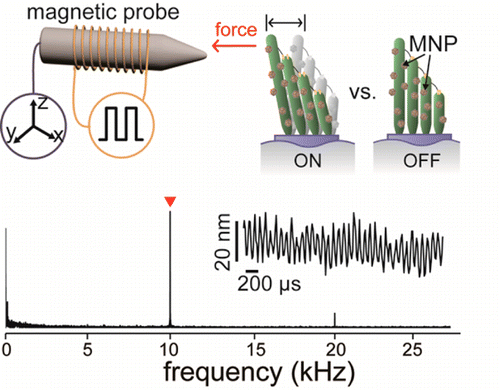Researchers have developed a way to utilize magnetic nanoparticles to study and potentially treat hearing loss. Unlike traditional methods employing glass pipettes or similar probes, the nanoparticles developed as part of the most recent study do not impose a mechanical load on cells. Additionally, the particles greatly enhance temporal and mechanical resolution, and address a number of issues associated with studying mechanotransduction in a biological system.
Cube-shaped magnetic nanoparticles
Auditory signals are mediated by mechanotransduction channels in hair cells located in the inner ear. The incoming vibration causes a mechanical deflection of the hair cells, inducing opening of the channels to allow ionic currents. Until recently, studying this conversion of mechanical stimuli into electrochemical signals required piezoelectric probes that not only add mass to the cells under scrutiny, but also have the potential for creating hydrodynamic artifacts when applied to the fluid-filled environment of the inner ear.
To address these challenges, a research team led by Dr. Dolores Bozovic of the University of California and Dr. Jinwoo Cheon of Yonsei University in Korea, developed cube-shaped nanoparticles with a magnetic core composed of zinc and iron. The shape, as well as the inclusion of zinc, increases the overall magnetic moment of the particles, resulting in an increase in each particle’s magnetic gradient force.
The particles are coated with silica and conjugated with carboxylated-PEG, enhancing their colloidal stability and limiting aggregation. The nanoparticles are then conjugated with concanavilin A type IV and added to an in vitro preparation of hair cells excised from the inner ear of a frog. The concanavilin A enables targeting of the particles to glycoproteins on the hair cell bundle.
A magnetism-gated switch
By controlling the nanoparticles with an electromagnetic probe, researchers were able to exert mechanical force on the order of pico-Newtons on hair bundles. The collective force of the particles resulted in displacements with a resolution of tens of nanometers and occurred on the sub-millisecond scale. The displacement resulted in the opening of mechanotransduction channels and an influx of potassium and calcium ions. These results indicate significant advantages over current methods, which currently rely on probes that dampen stimuli and can interfere with cellular response.
Researchers note that their magnetic-gated switch may be used to study other sensory systems that rely on mechanotransduction as well. The ability to manipulate the probe remotely and non-invasively makes it ideal for use in biological environments, making it a promising method for future in vivo study.
A full report of the findings can be found in the latest issue of “Nano.”
Related news:
- Plasmonic nanoparticles enhance visualization of cellular internalization
- Self-assembling magnetic nanoparticles
- The ongoing proliferation of nanotechnology research





